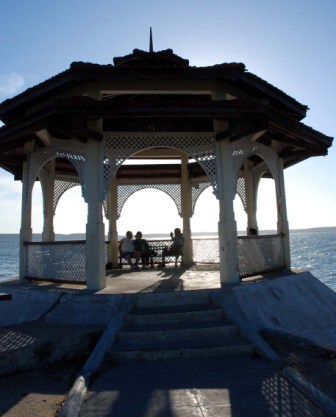Cuba’s Middle Class Consolidates Itself
Yenisel Rodriguez

On the periphery of Havana exist places that are being reconstituted as neighborhoods of the wealthy. This is the case of Vibora Park.
Vibora Park is one of the traditional residential neighborhoods that was least affected by the pre-revolutionary expatriation of the middle class. Many wealthy families were able to incorporate themselves into revolutionary institutions while conserving the ownership of their family heritage. The generally high standard of living has enabled this locality to enjoy a magnificent semi-urban infrastructure.
Other neighborhoods that were originally middle class have gone in other directions. Fontanar, for example, was abandoned either mandatorily or voluntarily by most property owners when the first nationalization measures began to be applied. The new owners, mainly university professors who were relocated there by the government, have never been able to come to grips with the sustained material deterioration that has affected their homes over the past fifty plus years.
Fontanar presents a community landscape of greater socioeconomic contrasts than Vibora Park. In the former, restored republican estates in the functionalist style alternate with fossilized exhibits of that same architectural style. The rundown properties are often decorated by the chassis of Russian Ladas, which generally belong to old married couples who debate about whether to eventually sell the car or to proudly hold on to it and conserve such an expensive revolutionary trophy.
To Vibora Park come wealthy families with different backgrounds. There’s the traditional or pre-revolutionary middle class that looks to recover lost opportunities or to build upon those they already possess. Others, the majority of the families in this neighborhood, belong to a middle class from marginal backgrounds. They look for circumstances in accord with their need for prestige and distinctness.
Both middle classes have shades of identifying characteristics. The traditional ones possess an enlightened culture that is expressed in the sober decoration of their home facades and in the limited socializing with the rest of the neighborhood.
The new middle class type lends greater emotional importance to relationships within the neighborhood and is more ostentatious, though their showiness hasn’t ended up modifying the dignified and contemplative atmosphere of the neighborhood. This differentiates them from other middle class families from marginal backgrounds, who even when inhabiting poor areas of the capital see themselves compelled to exhibit aesthetics of ostentatious consumption, to set them visibly apart from the working class surrounding them.
Vibora Park is homogenized despite the clusters of workers’ buildings that adorn its streetscape. From one of those buildings, on New Year’s Eve I could observe how the middle class celebrate the holiday. I discovered elitism and isolationism, though I didn’t view this with prejudice or hypercriticism. A sensation of uncertainty came over me when corroborating how our society now differs – without previous consensus.
I also directed my look beyond Vibora Park to find El Moro, an extremely marginalized neighborhood. I could hear its writhing even after midnight had passed. In this area are also based and reconstituted other forms of life, ones that should be perceived without prejudice or labels, but where hate towards others also flourishes.
Vibora Park and El Moro are extremes and continuations that are transforming our Cuban society into one of every person for themself. It is a game in which the winner is almost always the strongest.
